#worldhistory.org
Photo

Religions in Europe in the 16th Century
140 notes
·
View notes
Note
Hey can you suggest any good resources for learning about Egyptian mythology, theology, and spirituality?
Absolutely! One of my favorite books is Christian Jacq’s translation of PtahHotep’s teachings. His analyses on what PtahHotep wrote is as fascinating as it is informative and deals with matters of ascension, learnedness, and a state of bliss not at all dissimilar to the more eastern concept of enlightenment. Both PtahHotep and Jacq stress the importance of Ma’at in our daily lives, and set out teachings of spirituality for daily life that, if you read deeper, can extend into your spiritual practice.
Another suggestion is this book detailing mythology, worship, and other such topics. I think it’s a pretty common book—The Complete Gods and Goddesses of Ancient Egypt—but there are some really interesting points in it, even going so far as to deal with the importance of numbers in Egyptian mythology.
Here you can find a compilation of our sacred texts, including translations for the Book of the Dead, the Pyramid Texts, the Book of Gates, and the Book of the AmDuat. Along with those come a number of books written in the more modern world concerning ancient Egyptian religion, even translated hymns to Auset and books dealing with the myths, magic, and legends of ancient Kemet. This website is called archive.sacred-text and it’s pretty easy to navigate if the link doesn’t work.
Generally speaking, if you have more specific topics, worldhistory.org has some great articles too. I recommend looking at their Clergy, Priests, and Priestesses article and the Religious Beliefs and Practices article, although there are many more that are very interesting.
As with all research, make sure you know your sources, and take considerable doubts when reading the accounts of Greek scholars who came to Egypt. Oftentimes they’re straight up liars, and even if not, they only record the times of Ptolemaic Egypt and essentially disregard the entirety of Egyptian history. Thus far very few of their accounts have been evidentially proven correct.
63 notes
·
View notes
Text
VISHNU PERSONA CHART



“Vishnu is the supreme being who creates, protects, and transforms the universe. Vishnu (or Viṣṇu, Sanskrit: विष्णु) means 'all pervasive'[16] and, according to Medhātith (c. 1000 CE), 'one who is everything and inside everything'.[17] Vedanga scholar Yaska (4th century BC. The Garuda Purana (chapter XV)[20] and the "Anushasana Parva" of the Mahabharata both list over 1000 names for Vishnu, each name describing a quality, attribute, or aspect of God.The conch shell is spiral and symbolizes all of interconnected spiraling cyclic existence, while the discus symbolizes him as that which restores dharma with war if necessary when cosmic equilibrium is overwhelmed by evil. One of his arms sometimes carries a gada (club, mace named Kaumodaki) which symbolizes authority and power of knowledge.” -Wikipedia
“Vishnu is one of the most important gods in the Hindu pantheon and considered a member of the holy trinity (trimurti) of Hinduism with Brahma and Shiva. Vishnu is the Preserver and guardian of men, he protects the order of things (dharma) and he appears on earth in various incarnations (avatars) to fight demons and to maintain cosmic harmony.”
- WorldHistory.org
Here’s my ideas on what the asteriod could mean if it’s prominent in your chart
- can show where you are the most powerful, the most important and/or the most knowledgeable
- an indication of being perceived as all knowing
- could indicate being highly respected and being seen as an important person
- being protective over what you create
- how you might be seen as supreme and a great creator
- can show how you’ll transform your/the world
- what you’ll have many names in/ how people perceive you in many different ways
- where you can gain authority
- how you’re seen as godly or universally divine
(astro code: 4034)
CELEBRITIES WITH IT PROMINENT
BEYONCE - CONJ. JUPITER/SATURN
DOJA CAT - CONJ. NORTH NODE
TAYLOR SWIFT - CONJ. VENUS
MARYLIN MONROE - CONJ. MOON



NOW THE PERSONA CHART
(I feel like this is one of those charts that only really resonate when the asteroid is prominent in the natal chart, and It doesn't have to be conjunct to be prominent it can tightly aspected in other ways I would say the 2nd strongest aspect would be squares)
Nonetheless this PC can show why people worship and respect you. It can show how/why you are perceived as such a unique and powerful person and as someone who is influential, all knowing, and "godly" (I'm using the term godly loosely, we ain’t doing no Kanye shit over here) and I feel like this pc makes more sense to look at when its an established and proclaimed powerful person, but of corse you can look at yours to see your potential.
1H/ CHART RULER/SUN/VISHNU - How you're initially seen in your status as an important person. your main attributes that causes people to respect you. what shines the most about you that causes people to see you as someone of importance. how you should present yourself to reach this godly level of success
2H/VENUS- how you value yourself and how other people see value in you. the charm you have that'll help you gain respect. Why people love and respect you.
3H/ MERCURY - how you communicate your ideas and creations. Depending on the sign it can show what you might be really knowledgeable of and can show the area of expertise you have that causes people to admire and respect you. placements in this house can determine the titles people give you.
IC/4H/ MOON- the softer side of you that you use to gain respect from others. using your femininity to gain authority over others.
MARS - Where you should direct your dive and energy in becoming an important individual. using your harder more masculine side of you to gain authority over others.
5H - how you should creatively express yourself (if creative expression is what you want) to be perceived as powerful. your talents that can help you reach this as well.
6H - daily things you can do that can help improve your chances of being seen as an important person. placements can show how you should help others that'll get you on a pedestal.
7H - why people openly dislike you and don't understand the obsession people have over you, how your charm popularizes you and gives you opportunities to gain authority and respect.
8H/PLUTO - what you should invest in to become a highly respected individual. how you'll transform yourself to become a highly respected person and what you do that'll transform your world or how you'll massively effect the world. potential taboo topics that surround your name and might hurt your image/ position in power
9H/ JUPITER - can also show what you're very knowledgeable of. Can show were most of your luck is in reaching a level that is considered godly. the main thing about you that people might worship/adore.
MC/10 - how you should present yourself to gain high respect form the public. placements in this house can mean that you can easily do this.
11/URANUS - how you should manifest this sort of status, the unexpected things that can happen to you when you reach this status, the type of people you should surround yourself with when trying to become someone who is highly respected. the type of admires/fans/followers you will get when reaching this goal.
12/NEPTUNE - the secrets you hide form others to matin the image of being all powerful and knowing. the dreams/delusions you have pertaining to reaching this status. how you mentally deal with achieving this power. the illusion you cast onto others with the image of being someone who is "godly"
SATURN- the limitations and challenges you will come across when trying to reach this status. the maturity and wisdom you show as someone who's seen as a powerful person. the time it'll take to reach this sort of position in life.
NN/VERTEX - how you were destined to achieve this level of "godly- ness"/high prestige
CHIRON - The trauma and wounds you'll use to help yourself achieve this level of "godly-ness"/high prestige. Can also indicate the troubles you might go through to get to that place.



First time I interpreted an asteroid on this blog and I think I did pretty good. if you know anymore info on this asteroid please feel free to tell me 💋
-⚜️💫⚜️
#astrology#astro observations#astro notes#astro placements#astrology notes#pisces#aries#capricorn#taurus#cancer#persona charts#asteroid persona chart#vishnu#Vishnu asteroid#hindu gods#Beyoncé#Doja cat#taylor swift#marylin monroe
319 notes
·
View notes
Text
“Quién sabe, puede que la vida sea la muerte, y la muerte, la vida”
Eurípides
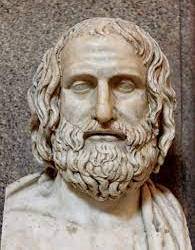
Fue uno de los tres grandes poetas griegos de la antigüedad junto con Esquilo y Sófocles, nacido en la isla griega de Salamina en el 484 a.C.
Primeros años
Algunos biógrafos sitúan el nacimiento de Eurípides en Atenas en el año 480 a.C y era proveniente de una familia acomodada, su madre se llamaba Cleito y su padre Mnesarco, quien era mercader.
En su juventud, Eurípides también fue actor, pero al no ser su voz lo suficientemente fuerte, prefirió concentrarse en su papel de dramaturgo.
Se sabe que fue alumno de Anaxágoras de Clazomene, Protágoras, Arquelao, y Diógenes de Apolonia.
En el año 466 a.c. cumplió su servicio militar, odiaba la política y era amante de estudio, poseía su propia biblioteca privada la cual era una de las mas completas de toda Grecia.
Tuvo dos esposas y fue amigo de Sócrates, el cual se dice solo asistía al teatro solo cuando se representaban obras de Eurípides.
Eurípides era el mas joven de los otros grandes escritores trágicos de la ciudad Esquilo y Sófocles.
Obra
Se conoce que escribió 92 obras pero se conservan solamente 18 tragedias y el drama satírico “El Cíclope”.
Su concepción trágica esta muy alejada de la de Esquilo y de la de Sófocles.
Sus obras tratan principalmente de leyendas y mitologías en un tiempo muy lejano, pero vigentes al tiempo en las que las escribió, destacando las crueldades de la guerra, su innovación en el tratamiento de los mitos, la complejidad en las situaciones y los personajes y una especial influencia a los problemas del momento entre otras.
Eurípides es conocido por haber reformado la estructura formal de la tragedia ática tradicional, mostrando personajes fuertes y esclavos inteligentes, ademas de satirizar a muchos heroes de la mitología griega.
Sus obras clásicas como “Medea”, consolidaron su reputación gracias a la maestría de sus diálogos inteligentes, sus buenas letras corales así como un realismo áspero presentes tanto en los textos como en las puestas de escena.
Eurípides fue también famoso por plantear preguntas incómodas, que inquietaban a la audiencia con un tratamiento provocador, creando historias y personajes completamente inmorales.
A pesar de que Eurípides solo ganó unos cuantos festivales en comparación a sus dos grandes rivales Esquilo y Sófocles, la popularidad de su trabajo nunca disminuyó y sus obras de teatro continúan siendo representadas aún en nuestros días.
Últimos años
En el 408 a.C. decepcionado por los acontecimientos de su patria, implicada en la interminable guerra del Peloponeso, Eurípides se retiró a la corte de Arquelao, quien fuera rey de Macedonia en donde murió 2 años después.
Fuentes: Wikipedia y worldhistory.org
#euripides#poetas#grecia#citas de reflexion#citas de escritores#frases celebres#citas de poetas#frases de reflexion#citas de la vida#notas de vida#frases de escritores
53 notes
·
View notes
Text
Of Course Orpheus Is Here
As I have analysed Stray Gods: The Role Playing Musical, my thesis has been that this is a story about change, choice, and family. This is why Persephone is a majour player, for example, because of the symbolism of that character and the associated themes of her story. But there is one character who is so iconic to these themes that he has become the poster child for the power of love in Ancient Greek mythology.
It would have been a crime to not include Orpheus in this story. Both because of the themes mentioned above, but also because it's a musical, and Orpheus was a bard. This character was handed to the writers on a silver platter. They didn't even have to change anything to make him fit.
But they did change Orpheus. Or rather, they did give their own take on the character.
Let me explain.
SPOILERS AHEAD

Let's start simple. Who was Orpheus in the myth? I know that this may be obvious, but it's nice to have everyone on the same page and to cite some sources.
According to Britannica, Orpheus was a bard who traveled with the Argonauts to retrieve the golden fleece, and married Eurydice. After her death...
"Overcome with grief, Orpheus ventured himself to the land of the dead to attempt to bring Eurydice back to life."
Which didn't go well for him. He was told to not look back, but he did anyway, and she was gone forever. The story continues, but it's all about his dismemberment, so I'm going to stop here. Worldhistory.org backs up this story, with some added context about his brother being killed by Hercules, amongst other interesting things. I encourage you to read the articles for yourselves.
In Stray Gods, the audience is introduced to Orpheus indirectly. As in, the entire segment with Orpheus in it is a reference to the myth. Freddy, Grace's friend (and in some playthroughs, love interest) has been killed and Grace will descend to the underworld to get her back. Immediately, the parallels are obvious, and we haven't met the guy yet.

There is also the parallel between Orpheus and Persephone. Specifically, the entitlement. Both feel that they made their choice and deserve the reward almost as a payment. The opening of this song serves to remind the audience, or spell it out if they don't already know, Persephone's backstory and motivation in this musical.

This is Orpheus's introductory shot. He's standing on a cliff overlooking an empty kingdom. You want symbolism? Here it is. Everything in this man's life has led up to this, this is a life he has built for himself. Except that he hasn't built it, he's taken it from someone else and is completely unequipped to deal with it. Orpheus is not a good ruler; Orpheus is an extremely lonely man.

And yet he is surrounded by people, by fans, by a chorus. Why is he so lonely?
He's lonely because these are ghosts, both literally and figuratively. They aren't friends or companions or anything similar, they are empty adoration, and he knows. The masks they wear serve to drive this point even further, there is no individuality, they aren't people to him, they are subjects. Orpheus is trying to become like Hades.


"Someone's coming..."
"You better be ready,"
"A wolf if wating in the tune."
"He's a master of his craft"
"Someone's coming..."
"We have to take back..."
"I can feel them howling at the moon."
"What is mine."
Stray Gods does this a lot. Two characters singing over the top of each other. But instead of shouting to be heard, they instead swap between like they are each the backup singer for the other. This is my favourite example by far.
It serves to show off how similar the characters are, but also their conflict and differences. It's like an argument through lyrics.
And that drum. That drum that keeps moving. Steady, like a clock, beating over and over, relentlessly. The drum that punctuates their words.
Time has made enemies of these two, both victims of a cruel king, now bitterness has turned them against each other. And the ticking of that percussive clock keeps on going, as if it's enjoying tormenting them. Until all of a sudden, it is gone.
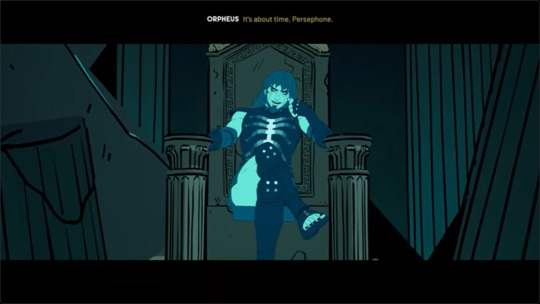
This is how you present a threat. Grace has so far been the one to control the music, the one to get answers. And now here is a man who can do the same thing.
Orpheus isn't the biggest danger to Grace at all, but the emotionally charged nature of this interaction, combined with how much fun he has doing exactly what she does, means that Orpheus is portrayed here as an outright villain. For the moment anyway.

This is a villain song. This is the cackling egomaniac explaining his plans to the audience, so they know to root against him, while simultaneously explaining how great he is. I couldn't help linking the "best that's ever been" line to Ratigan's World's Greatest Criminal Mind song from The Great Mouse detective. And like Ratigan, Orpheus is surrounded by sycophants who talk absolute bollocks to please him, because he is in command. Exhibit A:
"I haven't really sung a single word."
"No he hasn't even sung a single word."
The man has been singing for nearly three minutes straight at this point.

"What's your problem with Persephone?"
Finally, we understand some things. Why is Orpheus so bitter? Because the love of his life was taken from him, and he blames Persephone for not doing anything about it.
But take this line for example:
"And Persephone you stood right beside him and said what a shame."
Contrast that with this line from an earlier song.
"You abandoned me to a terrible fate... you know how far I bent before I snapped."
The second line is from Old Wounds, and it is Persephone accusing Apollo of abandoning her, now Orpheus accuses Persephone of the same thing. This isn't so much a literary parallel, but two literary lines layered on top of each other.

The point I am making is that Orpheus factors into this story as a warning. Choices have consequences, sure, but so does doing nothing. Apathy leads to complacency, and when victims lash out and the cause of their pain is unavailable, the people who could have acted and did nothing are easy targets.
The caveat is that this is metered by human perception, which doesn't always match reality. Orpheus has perceived Persephone's inaction as being complicit and hasn't recognised her pain. Meanwhile Persephone has done the same to Apollo. And Apollo has actually done this to himself, seeing his own inaction as a weakness, whether accurate or not.

Then there is the question of why Orpheus is so associated with rock. As in, it's fun, and this song is a genuine bop. But why was this choice made? He could have easily gone for more classical, memorial tone, or even sung a pop song. So why this? Other than because a ghost electric guitar is awesome.
"[Rock] has been a symbol of rebellion, youth, and freedom. Rock music has also been a symbol of social change. It has been used to voice the concerns of the oppressed and to challenge the status quo."
- Boysetsfire.net.
Essentially, rock is a genre about change or bringing about change. And what does Orpheus want to do? He wants to take revenge, to change his circumstances. He's been wating for this moment for years, and now he is ready.

But Orpheus is an incredibly static character, at least when he is introduced. He stews and can't move on past injuries. So, in my reading, this is what this song is, the rock here is to bring about the change in Orpheus and Persephone, in finally getting them to move on.

"If he's the victim, what am I?"
This is, in my opinion, the most revelatory part of this song and the musical as a whole. Its a lack of understanding of this basic fact: Pain is not exclusive. If one person is traumatised, that doesn't eliminate or minimise what someone else went through. Life isn't a game of who is suffering more. If you want to heal, you need to understand not just yourself, but those around you. You don't have to empathise, but seeing another victim as an opponent isn't helpful and actively harms people more.
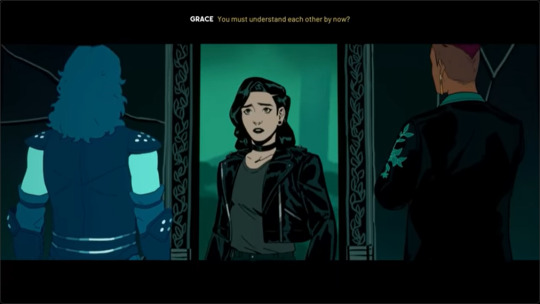
And if pain isn't exclusive, neither is healing. It is our duty as human beings to be kind, and if someone needs help, to at least offer and be willing to give aid. We are a collaborative species. If two people are in pain, especially because of a single cause, then helping each other to heal is always an option.

That drum that I identified with time and trauma returns for most of the song, playing erratic rhythms in ways a music scholar could probably analyse with much more coherence than me. What I will say is when the two finally reconcile, they sing over each other again, but this time it's less of an argument and more of a conversation, and that drum is nowhere to be seen.
They can take this healing on their own terms, in their own time.

Final Thoughts:
I love this song, and I love that Orpheus was included here. I feel that this song is a really nuanced discussion of the effects of someone like this version of Hades. He's not here, he's dead, but his legacy remains, and that empty throne is still ruling over Orpheus and Persephone as if they are still his subjects. I hope my analysis expressed this nuance coherently.
Next week I am covering both Adrift Reprise and The Trial. So stick around if that interests you.
Previous - Next
#rants#literary analysis#literature analysis#character analysis#what's so special about...?#greek mythology#stray gods#stray gods the roleplaying musical#stray gods persephone#stray gods game#persephone#orpheus#stray gods the musical#stray gods spoilers#stray gods orpheus
36 notes
·
View notes
Text
Coin's Research Tips

As you may know, I do a lot of research for my posts, to the point of adding references and citations. So I know very well that occult and witchy history is murky at best and full of nazis at worst. Here are some tips I've come up with for those of you who want to do your own research.

Cross-reference. Especially when you're looking into something that isn't widely accepted as fact or truth. For example, correspondences vary by region and culture, but a lot of times you'll be able to find similarities in the meanings of correspondences by looking at multiple sources. Cross-referencing also helps keep biases in check!
Use Wikipedia as a starting point. High School may have scared you away from using Wiki as a source, but it can be really helpful! Go to the citations and reference sections at the bottom of the pages and you'll see a few, and sometimes a lot, of references that you can go off to read!
Check for references and citations, and then check those references and citations. There can be dozens of links in someone's reference section or on their blog, but if none of them are valid or have any historical relevance to the post, then they're useless.
Look for reputable sites. These are often sites created by experts or consult experts. (Check below for resources)
Look into the author. Sadly the occult has a long history of bigots weaseling their way in, be sure you know who you're reading from.
Know that researching a bad person and why they're bad is not a bad thing and you are not bad for doing it.
Look for credentials. Why should you believe this author? What cultures and circles are they a part of? Are they academics, scholars, or historians? Find the credentials needed for whatever you're researching.
Fact check. Especially if it's your first time seeing the statement somewhere, see if there are other credible sources that back this statement up.
Ask for references. This really only goes for blogs or social media. No one who researches and writes about it should be offended by you asking for references.
Ask around. If you're looking into something but don't know where to start, ask your witchy friends! You can also send me an ask and I'll do my best to send you resources if I can find them.
Talk to people who actually practice what you're looking into. If you're researching a culture or practice, talk to practitioners and see what they have to say before proceeding further.
This doesn't just go for those of us that love research, at some point in everyone's path, they will stumble across something that needs to be looked into. You can also use these tips for casual research!
Here are a few of my favorite resources:
Sacred-texts.org
Your local library
worldhistory.org
@s-n-arly shared a list in this post of useful research sites such as:
refseek.com
worldcat.org
linkspringer.com
base-search.net
pdfdrive.com
If you're a person who also loves to research witchcraft and the occult, please add your favorite sources and tips in a comment or reblog!

Enjoy my posts? Consider leaving me a tip on my ko-fi!~
510 notes
·
View notes
Text


Votive altar to Ashtart? (Astarte?)
Fii village?, Lebanon
c. 450 BCE
Location: Museum of Archaeology, Istanbul, Turkey
Source: Worldhistory.org
#ashtart#astarte#athtart#athtartu#worshiper#human#phoenician costume#sun and moon#crescent#altar#ritual objects
30 notes
·
View notes
Note
Hi! I was wondering if you happened to know any good resources, or places to find resources, for information on the muses? especially clio.. i've looked in a few places but cant find much.
hope youre having a wonderful day :D
Hello, Nonny, and thank you for the ask!
I had to ask a friend for some resources because I don't personally know very much about the Muses (although I probably should ^^;). My friend said they weren't able to find any books on the Muses so far, unfortunately, but here are some links they found!
-
Theoi.com - basic info can be found here; you can also look at what books they got their info from at the bottom, which could help in finding other resources to look into!
HistoryCooperative.org - my friend says they are brief but helpful
WorldHistory.org - again, brief but helpful
Wikipedia.org - may not seem trustworthy at first glance, but Wikipedia can be quite helpful
-
When looking specifically for Clio, Theoi should have a separate page written about her right here. Wikipedia also has some good information in their annotations, my friend says.
-
Regarding some book recommendations, my friend has not read these but has heard good things about The Nine Muses: A Mythological Path to Creativity by Angeles Arrien as well as Muses at Work: Arts, Crafts, and Professions in Ancient Greece and Rome by Carl Roebuck.
-
I hope these resources are helpful to you! If anyone has anything to contribute, please do, and I'll try to reblog your addition. Have a good day/night, and take care! 🧡☺️
20 notes
·
View notes
Text

Frithjof Schuon - Detail from the Apparition of the Buffalo Calf Maiden, 1959.
source worldhistory.org
19 notes
·
View notes
Photo


Humbaba [Akkadian/Mesopotamian mythology]
In ancient Akkadian mythology, the pantheon of gods lived in a magical and sacred cedar forest. This mystical place was protected by a mighty creature called Humbaba (Huwawa in the Babylonian version), who was appointed as the forest’s guardian by the deity Enlil. In modern interpretations, the creature is sometimes called an ogre or a demon.
Humbaba was thought to be undefeatable, for not only was he a physically powerful giant, he was also clad in 7 magical radiances (called ‘auras’ in some translations) that protected the fearsome creature. He was a giant, humanlike creature with a strange face that resembled the entrails of a slain animal (which, if I understand it correctly, was a reference to the Mesopotamian practice of ‘reading’ the guts of animals to find omens. In addition, if the entrails happened to resemble the pattern on Humbaba’s face, this was considered a specific omen). His hands ended in dangerous lion-like claws. When Humbaba spoke, his voice was like thunder and his breath was deadly. It was said that his speech was (like) fire, but I’m uncertain whether this was meant to be taken literally.
Georg Burckhardt’s translation of the Gilgamesh epic provides a more detailed physical description: the monster’s head was adorned with bull-like horns, his body was clad in scales, his feet ended in bird-like talons and his penis was a snake. Humbaba also had a tail, which also ended in a snake. To my great annoyance, I have not been able to acquire a copy of this translation so I had to contact someone who did own a copy and ask for the description.
But I’m digressing. As it turned out, even the mighty Humbaba proved no match for the eponymous hero of the Epic of Gilgamesh. After Gilgamesh and Enkidu travelled to the sacred forest to find the creature, Humbaba appeared before them to deny the heroes entry to the sacred forest. He fought fiercely, but the god Shamash commanded the winds themselves to blind Humbaba (as Gilgamesh was favoured by the sun god Shamash). After a long and fierce clash, the monster was defeated. He pleaded and begged for his life, but was slain nonetheless. Gilgamesh and Enkidu then cut down some of the holy cedar trees to make a giant door, with which they adorned the temple of Enlil.
It is also worth noting that effigies/images of Humbaba were used to protect against evil. Also, Humbaba might originally have been derived from the Elamite deity Humban. To my knowledge, this theory remains unproven.
Sources:
George, A., 1999, The Epic of Gilgamesh: The Babylonian Epic Poem and Other texts in Akkadian and Sumerian, Penguin Books, Great Britain, 228 pp.
Burkhardt, G., 1922, Gilgamesh, Brandus, Berlin (secondhand description)
Black, J. and Green, A., 1992, Gods, Demons and Symbols of Ancient Mesopotamia: an illustrated dictionary, University of Texas Press, 192 pp.
(image source 1: Citrushark on Twitter and Reddit. I had to cut the bottom part of the picture because someone said I shouldn’t post a penis snake. Here is the full image, in all its uncensored Mesopotamian glory)
(image 2: an idol representing the head of Humbaba. Image source: Osama Amin on worldhistory.org)
#Mesopotamian mythology#Akkadian mythology#demons#monsters#humanoid creatures#mythical creatures#myths#mythology
71 notes
·
View notes
Photo

The global scope of travel of Viking raiders, explorers, settlers, and merchants between the 8th and 11th century.
226 notes
·
View notes
Text
Women of Ancient History
I got really interested and started researching this recently! There were a lot more people than I ever expected to find. Women have been priestesses, poets, artists, Olympians, swimmers, queens, and rebels since literally the dawn of time 💪
A few notes before this: because I'm trying to steer towards women who tend to be more unknown, I purposefully didn't include Sappho, Hypatia, or Nefertiti even though they were undoubtedly important.* Two exceptions here: one is Cleopatra, because I think that the modern image of her is essentially a caricature and the real woman is much more entertaining. The other is Queen Boudica, because... I just have a soft spot in my heart for her honestly. But others, like Agnodice of Athens, were excluded because there seems to be a consensus that they probably didn't exist.
Anyway, this also goes roughly in chronological order.
*= I understand that 'well known' is going to change in different parts of the globe. For example, Queen Boudica has greater name recognition in the UK, while Ba Trieu is well known in Vietnam. Coming from the North American perspective here
Enheduanna of Mesopotamia (2286 BCE)

The world's first ever named author was a Mesopotamian woman! She was born in 2286 BCE, and was the daughter of Sargon the Great (the first ruler of the Akkadian empire). Some people think the 'daughter' part might have been figurative. Regardless, at the time she was alive they were having trouble merging the culture of Ur and the newfound identity of the Akkadian empire with the traditional Sumerian practices. One of the ways to keep the population in check was through religion- which was why Enheduanna was appointed high priestess of the moon deity. The position would have been a great honor, and given her almost divine authority. She served in this role for about forty years, during which time she wrote 42 temple hymns and three epic poems- such as "Exaltation of Inanna". She notably changed the characterizations of the local pantheon significantly- drawing them closer to humanity, and elevating certain gods (like Inanna) above their previous station. She is also credited with the first use of first person in writing. Her work was studied and copied for years after her death, and influences a lot of other literature from antiquity.
Telesilla of Argos (510 BCE)

Yet another poet! Telesilla was very sick when she was young, and prayed to the gods to restore her health. She believed that the answer was in dedicating her life to the nine muses, and produced a really large amount of work. Unfortunately, unlike Enheduanna, there is very little of it that survives. She is referenced by several different historians: Pausanius, Plutarch, Athenaeus, etc. Beyond poetry, she is most famous for her role when the Spartans invaded Argos. They had, by this point, killed a lot of Argives- and Telesilla mobilized the women in defense. There are a couple of historians who argue that it was her music, rather than Telesilla's own initiative, which inspired this response. That being said, there are Ancient Greek accounts of women throwing stones and roof tiles at invaders, as well as women/kids/elderly attempting to defend the interior of the city while the young men defended the exterior. According to worldhistory.org, "nothing inherently improbable... that her name was famous both for her written work and her exploits at Argos against the Spartans strongly suggest that the account of Telesilla leading the women of the city into battle is based on a historical event."
Artemisia I of Caria (480 BCE)
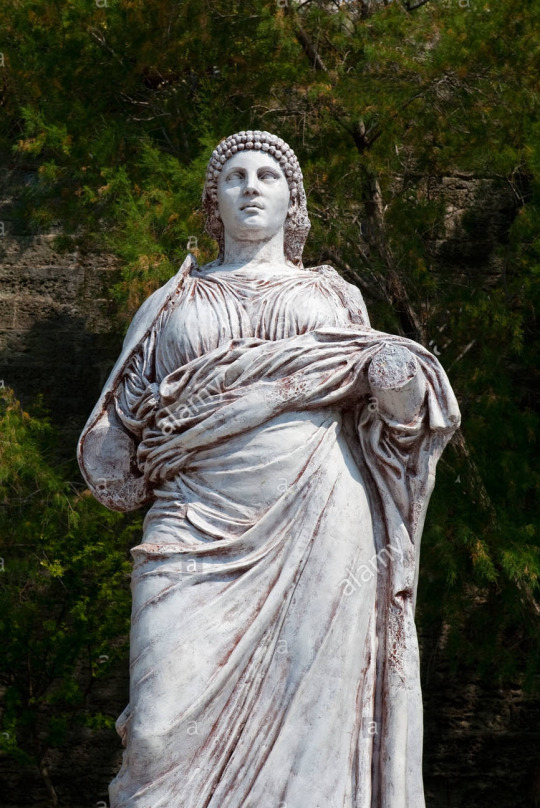
Artemisia of Caria was a woman from Ancient Persia. Why is this significant? Well, women from Ancient Persia had significantly more equality than women in many other parts of the world at the time. They had significant roles outside of the house- women could run businesses, be officers in the army, etc. That's how Artemisia got to have a significant position as one of Xerxes I's naval commanders. During this period Greece and Persia were at war, and Xerxes I was considering how to approach the Greeks. As they were considering a naval battle, Artemisia was the only one to advise against it. She basically told Xerxes to form a blockade and wait them out until they starved (!). Xerxes I didn't listen to her. Despite this, Artemisia came along for the battle on her own free will. She was very successful, sinking a Greek ship. However, her original prediction for the battle proved correct, and the Persians lost. She was pretty well honored during her own lifetime for this. Beyond that, historians (including Herodotus) mostly mention her favorably. After the battle Xerxes had her ensure his son's safety as they returned to Persia, and we *think* that she returned to Caria and continued her reign there afterwards.
Hydna of Scione (480 BCE)

You may notice that I gave the same year for Artemisia of Caria- if you did notice, good job, astute reader! There's a reason for that! While Artemisia is the Persian side, Hydna is a greek heroine from the same time period in the war (though different battles...)
There are two different versions of Hydna's story. Both agree that her father was a famous swimmer and diver named Scyllias, who taught her to swim from a young age as well. In the first version from Pausanius, her skills became needed before the battle of Artemisium. In this version she volunteers to swim ten miles with her father to the Persian ships, and then cut the ropes and anchors with a knife. The ships smacked into each other in the water, or else ran into the rocks and were destroyed- allowing the Greek forces a significantly better shot at victory. In the other version from Herodotus, her father was working for the Persians as a diver to recover treasure- while also passing information to the Greeks. Then he and his daughter sabotaged the Persian ships just before the major battle. However, in either story, Hydna's fate was unknown.
Cynisca of Sparta (300s BCE)

Cynisca was a princess who competed in the Olympic games against men (and won). Women in Sparta had more freedom than in other parts of Greece- they were allowed to own property, inherit, commit adultery, and received more education and physical training. So- Cynisca had an uncharacteristic level of freedom. She used this to her full advantage, and excelled at chariot racing. While she used a jockey, her wealthy male contemporaries also used them (ie, it wasn't a unique scenario in any way). Regardless, she won at two separate Olympic games. Her grave read "My ancestors and brothers were kings of Sparta. I, Cynisca, victorious with a chariot of swift-footed horses, erected this statue. I declare that I am the only woman in all of Greece to have won this crown."
Iaia of Cyzicus (110s BCE)

Iaia was one of several female painters mentioned by Herodotus- along with Irene, Aristarete, Timarete, etc. I chose her for this because more seems to be known about Iaia as compared to her other female counterparts. She was born in Cyzicus, and also did ivory engravings. There was a big demand for art in Rome at the time, and she was a better artist than many of her male contemporaries. To quote Pliny the Elder, "no one had a quicker hand than she in painting." Not only did she remain unmarried throughout her life, but her art was well known for choosing to center women as subjects.
Cleopatra VII of Egypt (70/69 BCE)

I know everybody already knows the basic biography of Cleopatra, so I won't get into that. I mostly just wanted to focus on her accomplishments for once, because I feel like she gets a bad rap in a lot of media even though she was arguably pretty good. She was the only pharaoh from her dynasty who bothered to read and write Egyptian, she was noted for her public speaking skills, she understood several more languages, and was educated on "mathematics, philosophy, oratory, and astronomy" (quoting history channel here). Throughout her reign she maintained a vast network of spies- not just inside Egypt either- to make the best decisions possible. She stabilized the country's economy, and when drought hit she opened the royal granaries to the public. She oversaw the construction of parts of the Temple of Hathor, as well as temples to some Greek gods. Cleopatra also expanded the Library of Alexandria after it was damaged in a fire. The woman was a highly strategic ruler.
PS: if you're interested, you should also check out her younger sister Arsinoë IV. Her story is pretty fascinating and there's a Drunk History episode about her (basically, she tried to take over Egypt at like age 15- I'll leave the rest open).
Queen Boudica of Iceni (60s AD)

I know that she is super well known, but I've admired her since I was a little kid so she gets a spot. Boudica was the wife of Prasutagus. Everything was relatively peaceful until she was widowed, and her husband's wishes that the area be left to both Nero and his two daughters (Heanua and Lannosea) were ignored. Accounts vary about how the Romans reacted next- but Tacitus claims that Boudica was flogged, the house was ransacked, and her daughters were raped. The other Iceni locals were treated no differently and rebelled as a result, targeting the area around modern day London. They were at first very successful. Boudica reportedly told the troops "win the battle or perish: that is what I, a woman, will do; you men can live on in slavery if that's what you want." Eventually they were beaten by the Romans- while Boudica was not killed here, she reportedly took poison rather than be a Roman prisoner. I couldn't find what specifically happened to her daughters. It's a really grisly ending, but her bravery is still awe-inspiring.
Azadokht Shahbanu of Persia (240 AD)
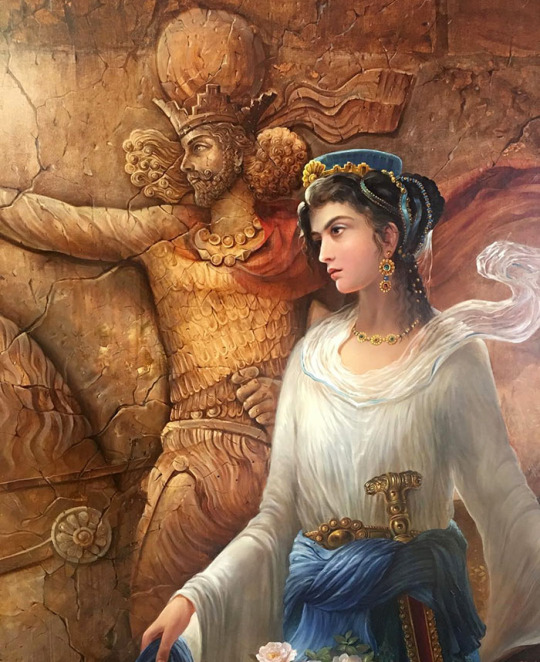
She was the wife of Shapur I. As you may recall from the section on Artemisia I of Caria, women in ancient Persia had significantly more influence than women in other parts of the world. This doesn't come into the story as much here as it did for Artemisia, though. Azadokht is here because she is thought to have highly encouraged the building of Gundeshapur, which had a teaching hospital and library. This legacy lasted for hundreds of years after her death. Traditionally it was her husband's direction which led to its building, but there's evidence that it was Azadokht who brought in Greek doctors to influence how it was run. Azadokht was also apparently very skilled at sword fighting as well.
By the way, there could probably be a whole other post of similar length about women from ancient Persia alone. These women had a unique amount of freedom and they were taking advantage of it. If you want to read more about them, here's an article called Twelve Great Women of Ancient Persia.
Zenobia of Palmyra (late 200s to early 300s AD)

For some historical context: Palmyra is in modern day Syria, and considered to be ruled by a very unstable Rome. Palmyra itself was a trading city between Persia and Rome- Zenobia herself was born a Roman citizen (interesting side note: she also claimed to be descended from Cleopatra. The truth factor in that is unfortunately dubious...). She was married to an important political figure, who was assassinated in about 266 CE. Zenobia then came to power. She started claiming parts of Roman Egypt for herself, and then started eyeing other pieces of neighboring territories- basically adding them without regard for the unstable Rome which could do nothing about it. This was until Aurelian, whose reaction to this insubordination was effectively a rampage. There are loads of different versions of what happened to her after this. However, Zenobia's court remained imprinted on historical memory + was referenced a lot afterwards.
Ba Trieu (300 AD)

Ba Trieu was born into an upper-class family. She *may* have been orphaned as a child and raised by an older brother, but we don't really know enough to say for sure. During this period the Vietnamese were under an oppressive Chinese regime, and Ba Trieu decided at age 19 that she'd had enough and was going to rebel. Her brother tried to dissuade her, and she reportedly said, "I want to ride the storm, tread the dangerous waves, win back the fatherland, and destroy the yoke of slavery. I don't want to bow down my head, working as a simple housewife." She made a shocking amount of progress in the next two years in at least 30 battles, until the Chinese finally recognized her as the serious threat that she was. Everyone agrees that she died afterwards, though stories vary about exactly how.
PS: if you're interested in other women from the Vietnamese fight against the Chinese, google the Trung sisters. They're remarkable women.
Fatima al Fihri (800 AD)

Fatima was born in modern day Tunisia, and unlike a lot of the women on this list, she actually wasn't a queen/ruler of any sort. Her father was a merchant. When Fatima inherited a lot of money from the deaths of her father/husband, she chose to use it to use her money to build a mosque. Her town was overflowing with people at this point, so it was becoming a major need. It ended up also accommodating a library and university, which I believe is still open today. Because of its age and prominence, a lot of the practices which are today associated with colleges originated here. To quote an article from Morocco world news, "for a North African Muslim woman to establish such an institution, which she opened to people of all ages, social classes, and faiths, is testament to her exceptional vision... the rest of the world has Fatima Al-Fihri, the mother of intellectuals, to thank..."
xxxxxxx
Unfortunately, that has to be all for now- there were a fair number of other women who I wanted to include here, but couldn't because they aren't 'ancient' enough. (Jigonhsasee? Shajar al-Durr? Looking at you).
I also learned sooooo much writing this so I'm a happy girl right now. But that being said, if you see any obvious inaccuracies, let me know and I'll edit it. There's a lot of cases where sources vary about what happened, so I had to pick and choose. Also, because of the quantity of women in this- and some didn't make the cut- I was only looking at 2-3 articles per person, leaving room for error. There are some cases where some people allege that the woman in question didn't actually contribute enough to the thing she's famous for. Unless I thought this belief seemed to have a lot of evidence + appeared in multiple articles, I left her in.
#women's history#history#ancient history#ancient rome#ancient greece#ancient persia#long post#herstory#feminism#Idk if this qualifies as feminist though lol
5 notes
·
View notes
Text
“De todos los infortunios que afligen a la humanidad el más amargo es que hemos de tener conciencia de mucho y control de nada”
Heródoto

Fue un historiador y geógrafo griego, nacido en la antigua ciudad griega Jonia en Halicarnaso, famoso por su obra “Historia”, considerada una de las fuentes mas importantes de la descripción del mundo antiguo a gran escala y una de las primeras en prosa griega.
Aunque no se conocen muchos detalles de su vida, parece ser provenía de una familia aristocrática de la Asia Menor, lo cual le permitía pagar su educación, pues sus escritos reflejan un profundo aprendizaje en las mejores escuelas de la época.
Sus continuos viajes al parecer por voluntad, también dan pie a pensar que se trataba de un hombre de recursos.
Se cree que sirvió en el ejército de hoplita, pues sus descripciones de dicha batalla son bastante precisas y siempre se cuentan desde el punto de vista de un soldado de infantería.
Dedica buena parte de su obra a relatar la historia del imperio persa, así como de sus costumbres y gobernantes, y de las guerras que enfrentaron con los griegos.
Dedicó gran parte de su vida a efectuar viajes para obtener la información y los materiales que le permitieron escribir una gran obra de valor histórico y literario.
Se le considera padre de la historiografía, y la primera vez que se le cita de esta manera es en el ciceroniano De legibus, un texto de Marco Tulio Cicerón escrito alrededor del año 52 a.C.
Su obra “Historia”, que se describe literalmente como investigaciones, exploraciones, fue escrita probablemente en Turios, una ciudad de la magna Grecia en el Golfo de Tarento a corta distancia de Sibaris.
El conjunto fue dividido en 9 libros por su editor alejandrino del siglo III a.C. uno por cada musa; Clío, Euterpe, Talía, Melpómene, Terpsícore, Erato, Polimnia, Urania y Calíope, y en ellos narra con detalle Las Guerras médicas entre Grecia y Persia a principios de siglo V a.C., con especial énfasis en aspectos curiosos de los pueblos y personajes, al mismo tiempo que describe la historia, etnografía y geografía de su tiempo.
Para sus obras históricas recurrió a fuentes orales y escritas, aludiendo siempre a sus informadores, es decir, citando el origen de la Fuente de la siguiente forma; “Según los persas…”, o “a decir de los griegos” etc.
Sus libros abarcan temas tales como la historia de Creso, acontecimientos en Babilonia y Persia, geografía de Egipto, costumbres y animales de Egipto, costumbres de los Escitas, la conquista de Persia a Libia, y múltiples relatos de batallas de la época.
Al ser “La Historia” la primera obra griega en prosa, no es de extrañar que su estilo sea simple y con vocablos antiguos. Ya Aristóteles definía su estilo de escribir como “ordenado o concatenado”, y al ser muy concreto, rehuía a las abstracciones, fijándose en lugar de ello en datos perceptibles.
Heródoto muere en el año 425 a.C. a la edad de 59 años, tal vez en Turios o Calabria y hay quien señala Pella o Macedonia.
Fuentes: Wikipedia, worldhistory.org, historianationalgeographic.com.es
#grecia clasica#grecia antigua#grecia#herodotus#herodoto#historiadores#citas de reflexion#frases de reflexion#escritores#frases de escritores#frases celebres
21 notes
·
View notes
Text

A photo of Izumi-san's capturing what remains of the façade to the Library of Celsus, an ancient Roman building constructed in the second century, considered one of the great libraries of the ancient world.
To the webmaster's recollection, there doesn't seem to be any architecture in Magus's international releases where the Library of Celsus' influence is visible at the time of posting.
Some excerpts from an article about the Library on worldhistory.org:
The Library of Celsus in ancient Ephesus, located in western Turkey, was a repository of over 12,000 scrolls and one of the most impressive buildings in the Roman Empire. Constructed in the 2nd century CE, it was named after the city's former Roman governor. Today, only the library's impressive facade remains of this once great building and is a silent witness to the city's stature as a great centre of learning and early Christian scholarship during the Roman period.
The library had three entrance doorways, each with elaborately decorated frames, with the central doorway being greater in height than the other two. The doorways each have a window above them, and they are flanked by four statues set back in niches. These figures with inscribed bases represented four qualities associated with the late governor:
• wisdom (sophia)
• intelligence (ennoia)
• knowledge (episteme)
• virtue (arete)
The interior of the library measured 16.72 m by 10.92 m (54.8 x 35.8 ft) giving some 180 square metres (2,000 square feet) of floor space, and it was paved with decorated marble. Part of the western wall is curved to form an apse. The walls were lined with niches for storage of the scrolls. There may have been around 12,000 scrolls which were intended to be consulted on the spot and not removed from the library, although some borrowing may have been permitted by a privileged few.
Unfortunately, in 262 CE the library was destroyed by fire during a Gothic invasion. However, the facade survived and repairs were made to the library in the late-4th century CE and a small fountain added next to the steps in front. [...] In the 10th century CE, an earthquake caused the facade to collapse. The library was excavated in 1904 CE and the sarcophagus of Celsus discovered. The facade was reassembled and then partially restored. The great statues of the building's facade were taken to Vienna after their discovery and so today they have been replaced by faithful copies.
3 notes
·
View notes
Text
How To: Deity Deep Dives
As I mentioned before, my deity deep dives will be a bit more scarce as I am focusing on other things right now, but here’s how you can do them yourself!

Step 1: Pick a deity.
Sweet and simple! Pick a deity to deep dive on. You can even make a list of multiple if you'd like.
Whether it's because you're fascinated by a deity or you want to see if they'd be a good fit for you to worship, there are many reasons for you to research deities.
Step 2: Gather Resources.
Primary and secondary sources involving their myths, legends, and how they were worshipped in the past are your best resources to start out.
You can also reach out to other people who work with or worship this deity and ask about their experiences. Plenty of people also post about their experiences online so make sure to check those out as well.
Wikipedia is a good place to start—I know what your teachers said about Wikipedia but hear me out: Go to the wiki page for said deity and scroll all the way down until you see “references”, this will show you a list of articles, books, lectures, and other resources for the page. They also usually have a “further reading” section of texts that you can look to for info on that deity.
Step 3: Make a list.
What is it that you want to know specifically? Usually, I’ll look for the deity’s relations, history, myths, symbols, correspondences, and epithets. I will set up a note with these main points as subheadings and then I’ll have a “notes” section for any miscellaneous or extra information.
Here are some examples of what to look up when researching deities:
(deity’s name) primary sources ← this one isn’t always helpful but it’s always worth a shot! If you can find the primary sources for a deity that's all the better.
(deity’s name) mythology ← will show you the myths involving said deity.
(deity’s name) history ← will show you the culture and religion that the deity is from.
(deity’s name) ancient worship ← will show you how they were worshiped in the past.
(deity’s name) worship ← will likely show you more modern worship which can be helpful!
I’ve also had good experiences with mythopedia, worldhistory.org, britannica, history.com, and sacred-texts. Some cultures and pantheons will have whole websites dedicated to them.
More research tips:
Don’t try to view ancient myths from a modern lens. Learn the history of the culture and religion that the deity comes from. This will help you put the myths and worship of the deity into context. There are certain nuances that are important to be aware of when researching different cultures.
Make lots of notes. Even if you think you’ll remember it, make a note of it. This can be something as simple as “Artemis was a virgin” or “The Morrigan is a triple goddess”, just put down enough info so that, if you need to look it up again, you can find the info pretty easily with a simple google search.
Sounds like a lot of work?
That’s because it is! But if you enjoy learning about the past or just want to learn about a deity in order to work with or worship them, then these tips can help you out.
379 notes
·
View notes
Text

Votive Altar with Egyptian Motifs
Sidon, Lebanon
c. 450 BCE
Location: Museum of Archaeology, Istanbul, Turkey
Source: Worldhistory.org
47 notes
·
View notes